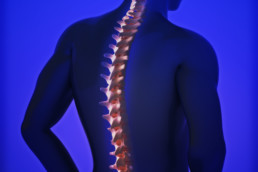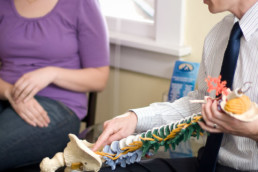Introduction
Chiropractic Care Greatly Decreases the Severity of Scoliosis
Denver Chiropractic offers scoliosis treatment in Denver for those in need. Scoliosis is a lateral curvature in the normally straight vertical line of the spine. The key concern with scoliosis is whether the curve will progress. The causation of scoliosis is very complex, and has been seen in cave drawings of early man. An examination will discover if the scoliosis is caused by congenital anomalies, tumors, bony disease, or instability from trauma. The majority of people with scoliosis will fall under the term, “idiopathic scoliosis”. AIS is a complex disorder, and not purely biomechanical. Scoliosis treatment should be aimed at improving the central nervous system function, such as adding proprioceptive and neurological re-education.
Set up an appointment or consultation today.
Effects of Scoliosis
- abnormal vestibular and, or proprioceptive function
- MRI – confirmed brain stem abnormalities
- postural control problems
- altered central nervous system reflex processing, and altered motor function
- cerebral asymmetry
- EEG abnormalities
- platelet abnormalities
- muscle fiber variation, concave vs. convex side of curve
- collagen abnormalities
- genetic pre-programming
- nutritional inadequacies
FAQ
Chiropractic Care Greatly Decreases the Severity of Scoliosis
- Evaluate risk factors for progression
- Follow every 6 months until skeletal maturity
- Chiropractic Management – adjustments, proprioceptive rehab
- Evaluate risk factors for progression
- Monitor every 3-6 months, including radiographs
- Chiropractic Management – adjustments, proprioceptive rehab
- Daily stretching & positioning to counter curvature
- Possible lift therapy
- Possible electrospinal muscle stimulation
- Orthopedic & Neurologic evaluations
- If curve progresses and skeletal growth remains – Brace Therapy Consultation
- Continue treatment and monitor until skeletal maturity
- Improve range of motion, especially in the direction of convexity
- Reduce contractural changes in soft tissues (concave) side
- Improve strength, endurance, and postural control of convex side muscles
- Identify and correct vestibular and proprioceptive imbalance or deficiency
- Improve balance, and coordination
- Normalize weight bearing in lower extremities and spine
- Improve vestibular-visual integration, oculo-vestibular therapy
- Neuromuscular re-education
- Normalize postural reflexes
- Re-educate central nervous system, including upper motor neuron pathways



